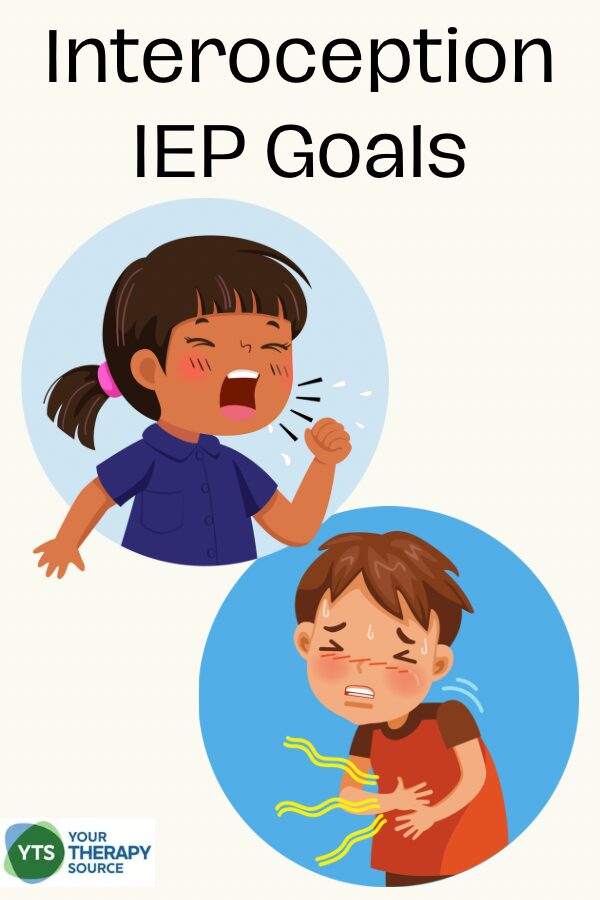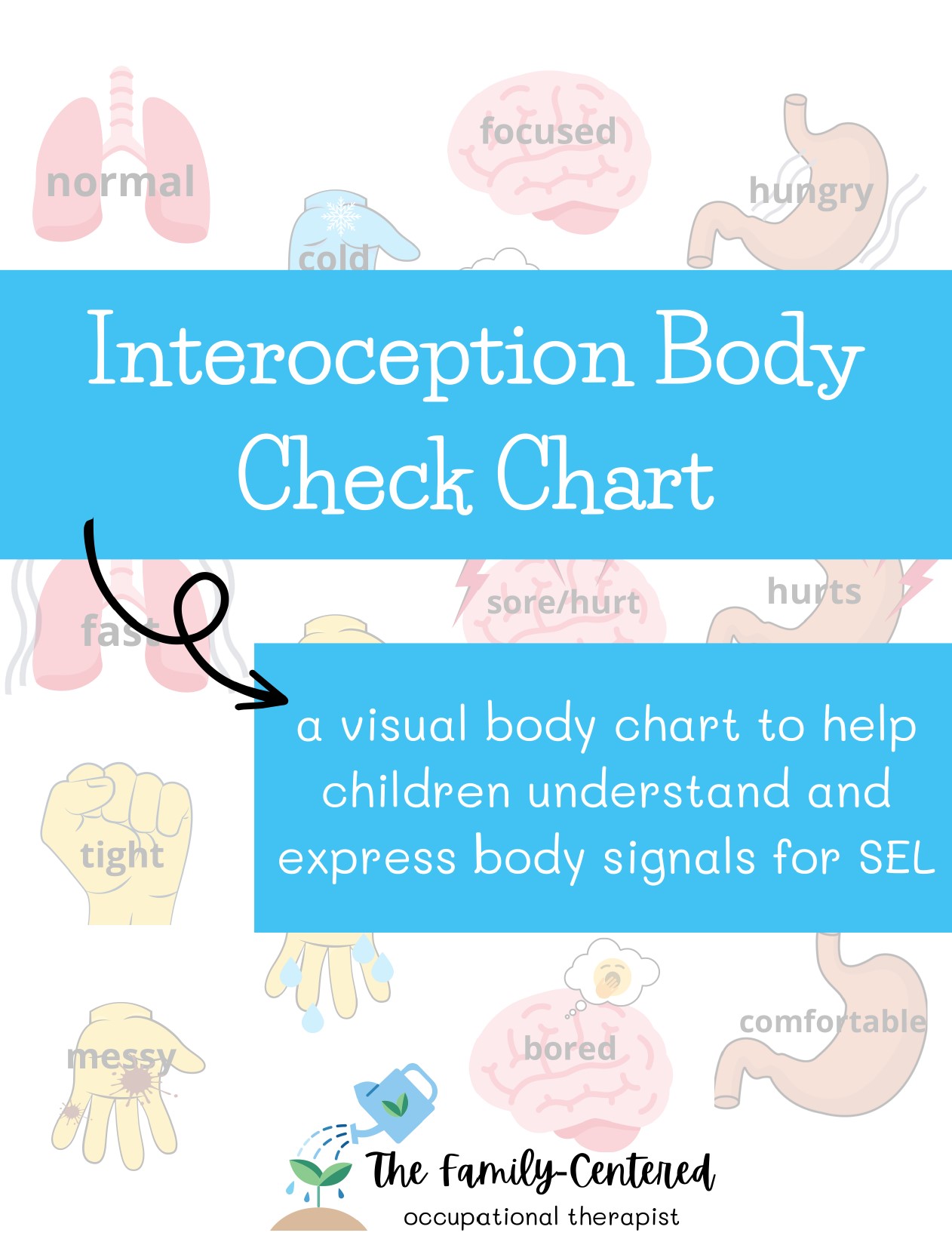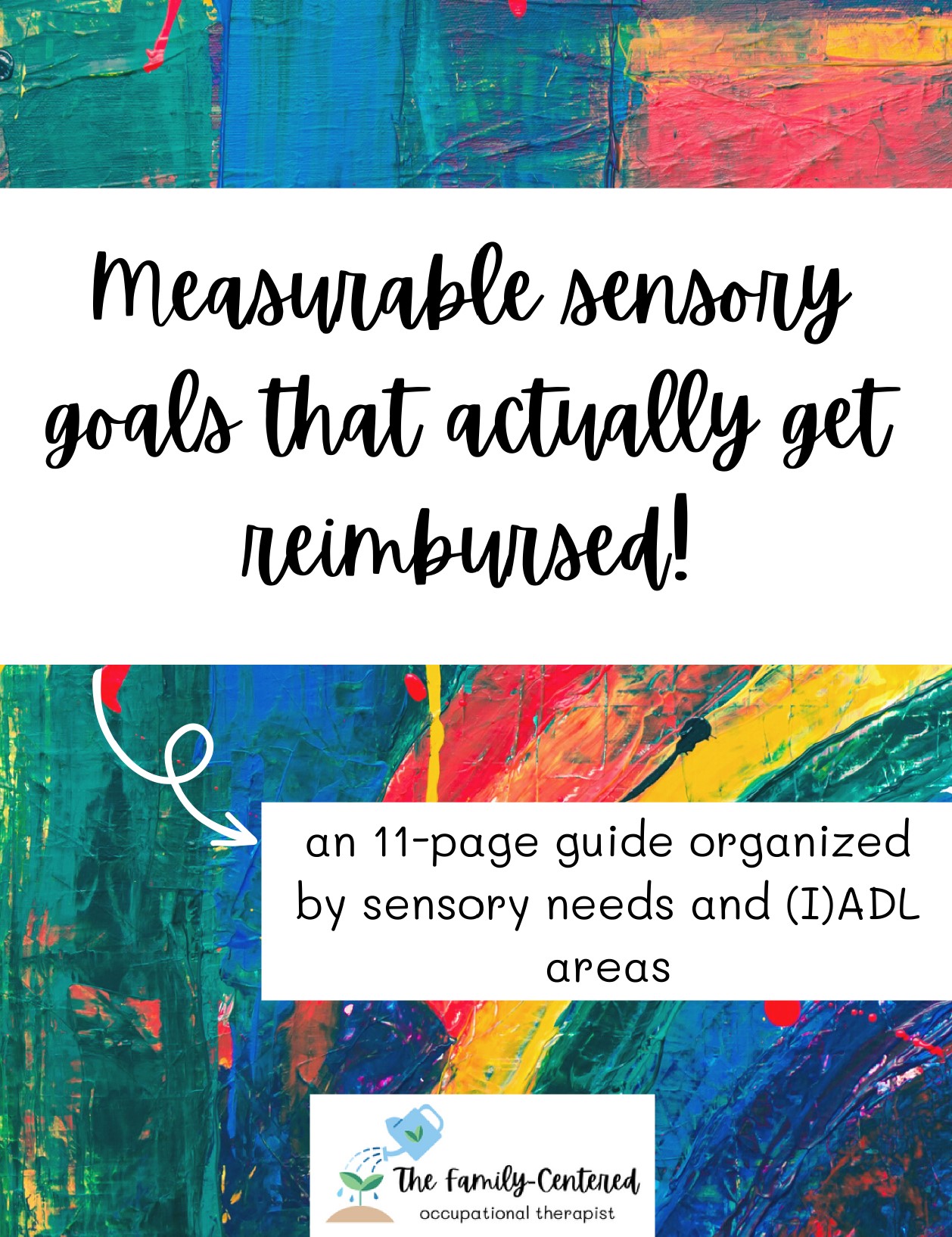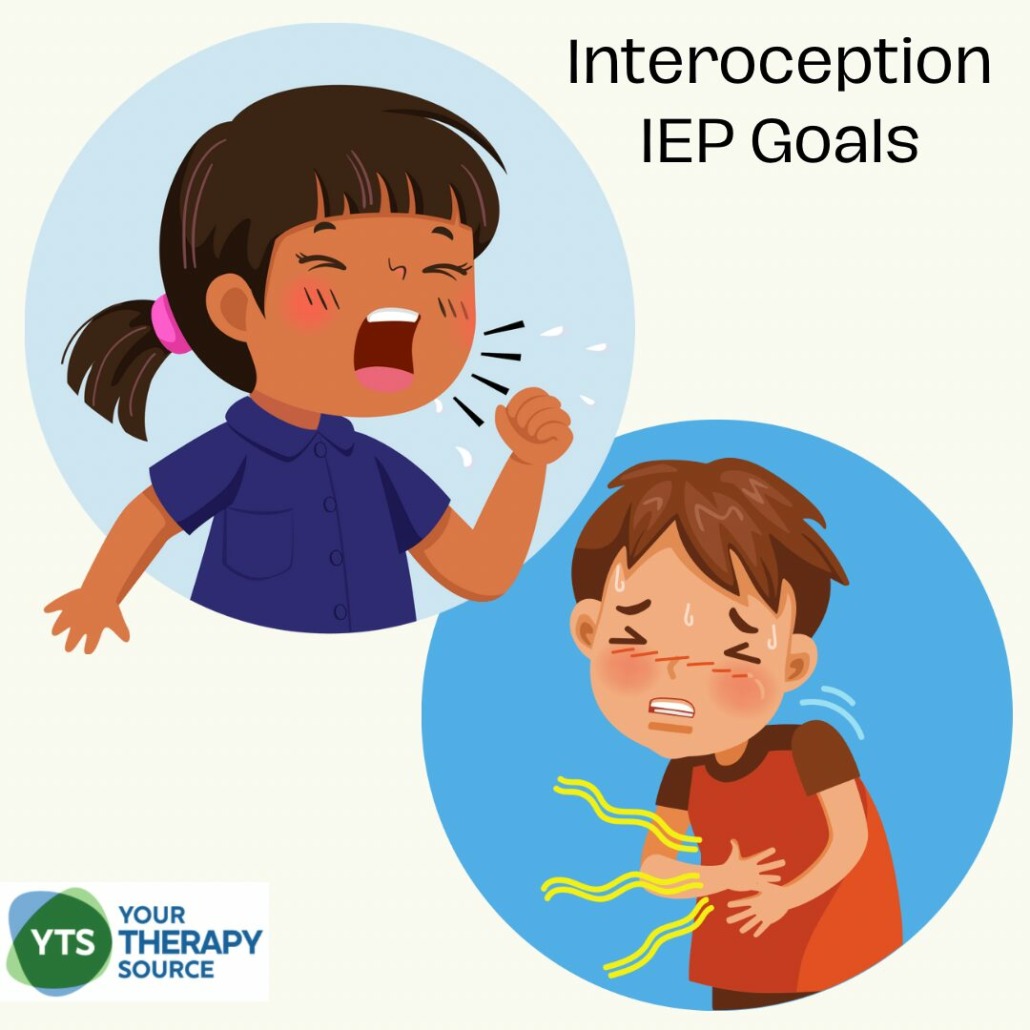Interoception IEP Goals – Examples and Suggestions

Interoception IEP goals play a crucial role in addressing the sensory processing needs of students, particularly those with sensory processing disorder or autism spectrum disorder. Interoception, the awareness of internal sensations, influences various aspects of daily life, including emotional regulation, social interactions, and self-regulation skills. Understanding the strengths and weaknesses related to interoception is key to formulating effective IEP goals tailored to each student’s needs.
The Eight Senses
In addition to the traditional five senses—sight, hearing, touch, taste, and smell—there are three lesser-known senses that play crucial roles in sensory processing: proprioception, vestibular, and interoception. Proprioception refers to the sense of body awareness and the ability to perceive the position and movement of one’s body in space. The vestibular sense governs balance, spatial orientation, and coordination, providing information about motion, gravity, and equilibrium. Interoception, the focus of this discussion, involves the awareness of internal sensations such as hunger, thirst, emotions, and physiological states. Together, these eight senses contribute to our perception of the world and our ability to interact with our environment effectively. Understanding and addressing the needs of all eight senses are essential for supporting individuals, particularly those with sensory processing differences, in achieving optimal functioning and well-being.
Understanding Interoception
Interoception refers to the body’s ability to sense internal signals such as heart rate, body temperature, and other physiological sensations. For some students, particularly those with sensory processing challenges, interoceptive awareness may be impaired, leading to difficulties in recognizing and responding to their body’s signals effectively. This can manifest in challenges with emotional regulation, social interactions, and self-regulation skills.

Interoception Body Chart Check
Strengths and Weaknesses
Students with strong interoception skills may demonstrate heightened self-awareness, emotional regulation, and the ability to recognize and respond to their body’s signals effectively. On the other hand, those with weaknesses in interoception may struggle with emotional regulation, social interactions, and self-regulation skills, leading to difficulties in everyday activities and social development.
Remember, Each Student is an Individual
It’s important to recognize that every student is unique, with their own strengths, challenges, and individualized needs. While the SMART IEP goals outlined above provide examples of how interoception-related difficulties can be addressed in an educational setting, it’s crucial to tailor goals to each student’s specific circumstances, abilities, and areas of growth. The development of meaningful and effective IEP goals should involve collaboration among the student, parents or caregivers, educators, therapists, and other members of the IEP team. By considering the student’s current abilities, interests, and learning styles, as well as their long-term aspirations and personal goals, the IEP team can create a comprehensive plan that supports the student’s holistic development and promotes success in both academic and everyday life experiences.
Setting SMART IEP Goals
Here is an example of a specific SMART goal and explanation.
Self-Regulation IEP Goals:
- Specific: The student will identify and label their emotions in response to interoceptive cues.
- Measurable: The student will accurately identify and label at least three internal sensations (e.g., heart rate, body temperature) in response to visual cues provided by the therapist during therapy sessions.
- Achievable: The student will demonstrate progress towards this goal by participating in interoception activities and mindfulness strategies during therapy sessions.
- Relevant: Improved interoceptive awareness will enhance the student’s ability to regulate their emotions and engage in social interactions effectively.
- Time-bound: The student will demonstrate mastery of this goal within six months, as assessed by the occupational therapist through observation and written reports.

Writing Measurable Sensory Goals
25 Examples of Interoception IEP Goals
SMART Interoception IEP goal examples with measurable outcomes:
- By the end of the semester, the student will correctly identify three internal sensations (e.g., hunger, thirst, fatigue) with 100% accuracy during structured activities.
- Within six months, the student will independently implement two self-regulation strategies in response to identified internal sensations in 3 out of 4 trials.
- By the end of the school year, the student will describe and differentiate between at least five emotions associated with internal sensations with 90% accuracy.
- Over the course of the semester, the student will identify and appropriately respond to at least three bodily cues indicating stress or anxiety in 80% of observed instances.
- By the end of the grading period, the student will use deep breathing techniques to regulate heightened internal sensations in at least two different settings with minimal prompting 100% of the time.
- Within three months, the student will independently recognize and communicate the need for sensory breaks when experiencing overwhelming internal sensations at least 80% of the time.
- By the end of the academic year, the student will develop a personalized toolkit of at least three strategies for managing and interpreting internal sensations, successfully implementing each strategy in 4 out of 5 trials.
- Over the next six months, the student will demonstrate increased awareness of atypical internal sensations and communicate them to an appropriate adult in 90% of instances.
- By the end of the semester, the student will accurately predict and prepare for sensory overload situations by implementing at least two proactive coping strategies 100% of the time.
- Within nine months, the student will demonstrate improved ability to regulate arousal levels in response to internal sensations, resulting in decreased instances of disruptive behavior in 4 out of 5 observed instances.
- By the end of the school year, the student will independently initiate sensory self-checks at least twice daily and report findings to a designated adult with 100% consistency.
- Over the course of the semester, the student will participate in at least two interoception-focused activities per week, showing improvement in recognition and interpretation of internal sensations in 90% of instances.
- Within six months, the student will develop and consistently use a visual or written reminder system to prompt self-monitoring of internal sensations throughout the school day, achieving this goal 100% of the time.
- By the end of the grading period, the student will accurately identify and label at least five physical responses associated with different emotions with 95% accuracy.
- Within three months, the student will demonstrate increased ability to differentiate between physical sensations caused by external factors and those arising internally in 4 out of 5 instances.
- By the end of the academic year, the student will independently initiate and complete a sensory check-in routine upon transitioning to a new environment or activity with 100% consistency.
- Over the next six months, the student will participate in at least one group activity per week focused on recognizing and interpreting bodily cues associated with emotions, demonstrating understanding in 90% of instances.
- By the end of the semester, the student will utilize at least three coping strategies to manage heightened internal sensations without prompting from adults in 4 out of 5 opportunities.
- Within nine months, the student will accurately predict and prevent escalating emotional dysregulation by identifying and addressing underlying internal sensations in 80% of instances.
- By the end of the school year, the student will demonstrate improved ability to communicate internal states and sensory needs to peers and teachers, achieving this goal 100% of the time.
- Over the course of the semester, the student will develop and implement a personalized plan for self-regulating internal sensations during transitions between activities, successfully using the plan in 4 out of 5 instances.
- Within six months, the student will independently initiate and participate in relaxation techniques to alleviate discomfort caused by internal sensations in 90% of instances.
- By the end of the grading period, the student will demonstrate increased tolerance for unfamiliar or uncomfortable internal sensations through exposure and desensitization activities, showing improvement in 80% of instances.
- Over the next six months, the student will utilize at least two adaptive tools or accommodations to support interoception skills in the classroom setting, successfully implementing each tool 100% of the time.
- By the end of the academic year, the student will generalize interoception skills across different environments and situations, demonstrating consistent application in daily life in 90% of instances.
What to Do If You Think Your Student or Child Needs Help with Interoception
If your student or child is struggling with interoception skills, it’s essential to seek support from professionals such as pediatric occupational therapists who specialize in sensory processing and self-regulation. An OT evaluation can provide valuable insights into the specific interoceptive challenges your child is facing and identify areas for intervention. The first step is to collaborate with the school team to develop specific goals tailored to your child’s needs, incorporating strategies to enhance body awareness, sensory integration, and self-regulation skills. These goals should be measurable and based on best practices in sensory processing intervention, considering the child’s individual end user needs and preferences. Sensory strategies, such as sensory breaks, sensory tools, and sensory-based activities, can be implemented both at home and in the educational environment to promote interoceptive awareness and integration. Additionally, incorporating social-emotional learning and executive function skills into daily activities and routines can support your child’s overall development and well-being. By addressing interoception difficulties proactively and collaboratively, you can empower your child to navigate their sensory experiences more effectively and participate fully in daily life activities.
Conclusion
Incorporating interoception IEP goals into educational programs is essential for addressing the sensory processing needs of students, particularly those with sensory processing disorder or autism spectrum disorder. By understanding the strengths and weaknesses related to interoception and setting SMART goals tailored to each student’s needs, educators and therapists can support their development in self-regulation, emotional regulation, and social skills, ultimately fostering success in both academic and everyday activities.
For more information on sensory processing IEP goals and self-regulation strategies, check out these helpful resources:
- OT IEP Goals for Sensory Processing
- Self-Regulation IEP Goals
- What is Interoception?
- Sensory Processing and Interoception



